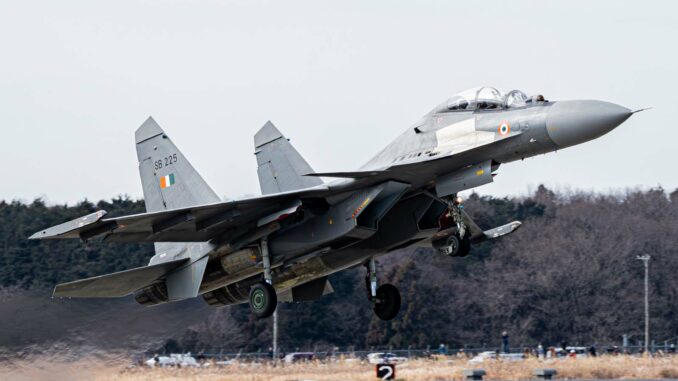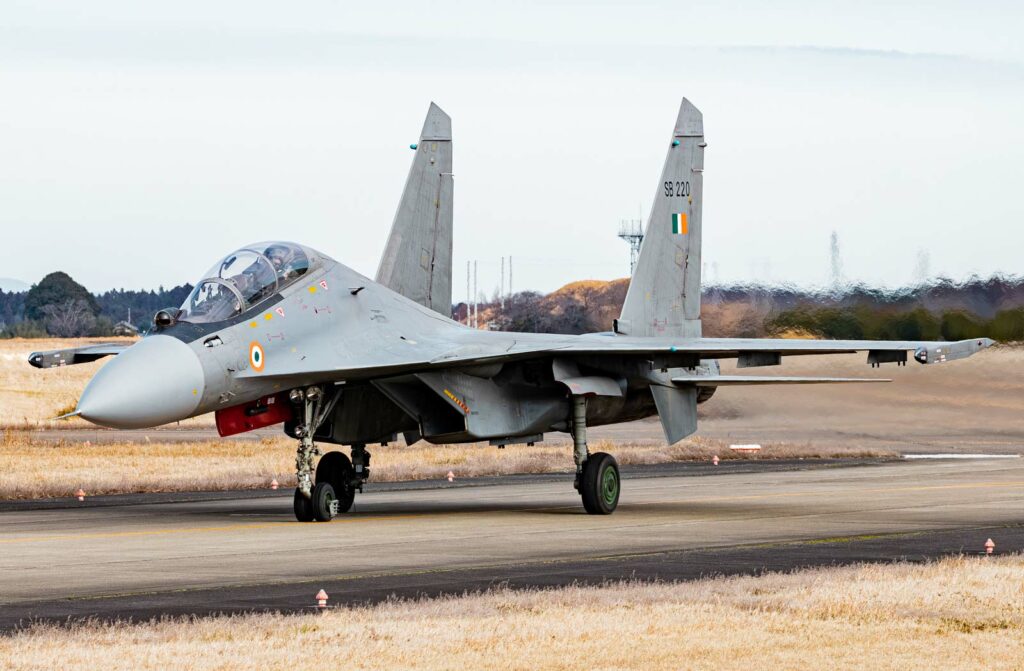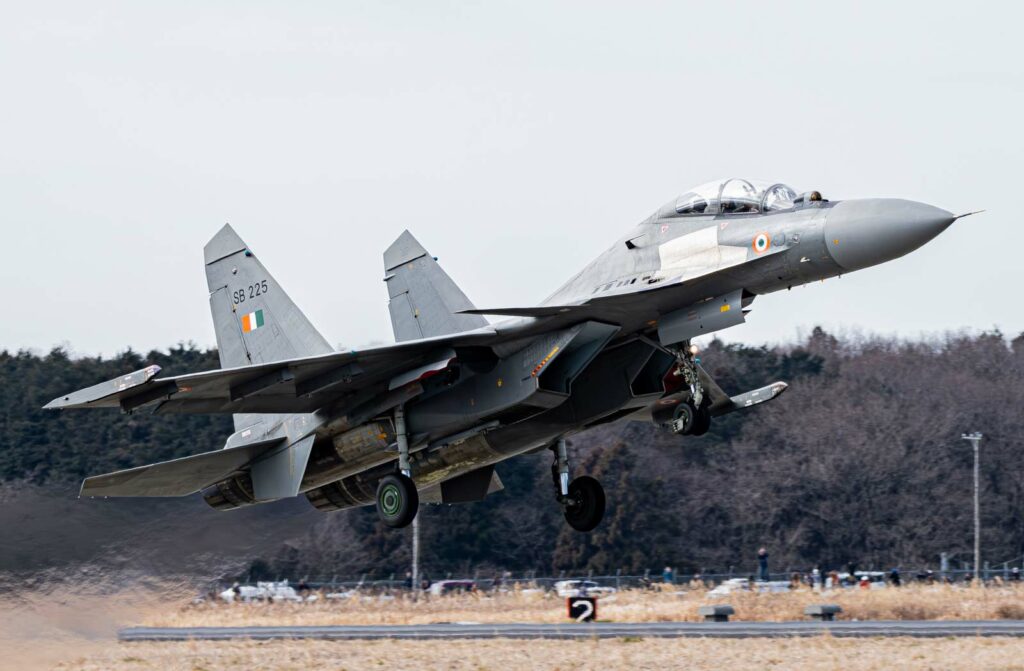
India upgrades its Su-30 MKI fighters with AESA radars, new weapons and advanced electronic systems to enhance its air capabilities.
Strengthening Indian air capabilities
India is planning a complete upgrade of around 100 Russian Su-30 MKI fighters. The project, due to be signed this year, will focus on improving long-range strike capabilities, combat electronics and radar technology. Hindustan Aeronautics Limited (HAL), in close collaboration with the Russians, will undertake this integration and upgrade process in India.
HAL will act as ‘Lead System Integrator’, with support from the Defence Research and Development Organisation (DRDO) and other public and private companies in the defence sector. The Indian Air Force (IAF) will play a key role, dedicating teams to project monitoring, software development and flight testing and evaluation.

This upgrade comes after the limitations of the Su-30MKI were felt during the Balakot strike in 2019, where they were outclassed by Pakistan Air Force (PAF) F-16s. The Su-30 upgrade program, established in 2017, aims to reduce dependence on foreign OEMs by integrating indigenous technologies.
The upgrade will focus on an indigenous active electronically scanned array (AESA) radar, more powerful than the one installed on the Tejas Mk1-A. The aircraft will also be equipped with improved avionics, sensors and new generations of long-range air-to-air and air-to-ground weapons. A comprehensive Electronic Warfare (EW) suite is planned to enhance aircraft survivability in hostile airspace.
Strategic impact of the Su-30 MKI upgrade on Indian air security
The modernization of the IAF’s Su-30 MKI represents a significant strategic milestone for Indian air defense. This initiative aims to transform these 4th generation fighters into “4.5th generation plus” aircraft, putting them at the forefront in the event of conflicts with adversaries such as China.
The replacement of PESA radars with AESAs will provide longer range and simultaneous detection of air-to-air and air-to-ground threats. Electronic warfare capabilities, dating back to the early 2000s, will be upgraded with state-of-the-art technologies, increasing the survivability of Su-30 MKIs in hostile environments. The integration of the indigenous BVRAAM ‘Astra’ missile is also planned.
These enhancements will considerably boost the IAF’s operational capabilities, enabling long-range strikes with greater precision and improved defense against air and ground threats. By penetrating deeper into hostile airspace, these fighters will reinforce India’s strategic posture in the region.

The industrial aspect of this upgrade is also noteworthy. A workshare of around Rs. 1,200 crores is expected for SMEs, start-ups and private industries during the design and development phase. This will stimulate the Indian defense sector, fostering innovation and the development of local skills.
The modernization of the Su-30 MKI will also have geopolitical implications. By strengthening its air capabilities, India is sending a clear message to potential adversaries about its commitment to maintaining regional air superiority. This could prompt neighboring countries to review their own military capabilities, potentially triggering an arms race in the region.
From a diplomatic point of view, this upgrade illustrates India’s commitment to reducing its dependence on foreign suppliers, thus promoting strategic autonomy. It could also influence India’s relations with countries such as Russia and the USA, in terms of cooperation in the defense sector.
Upgrading India’s Su-30 MKI is a crucial step in strengthening its air defense and maintaining strategic superiority in the region. This project, combining technological advances and industrial autonomy, marks a significant evolution in India’s defense capabilities, with far-reaching repercussions on regional security and the balance of power.
War Wings Daily is an independant magazine.